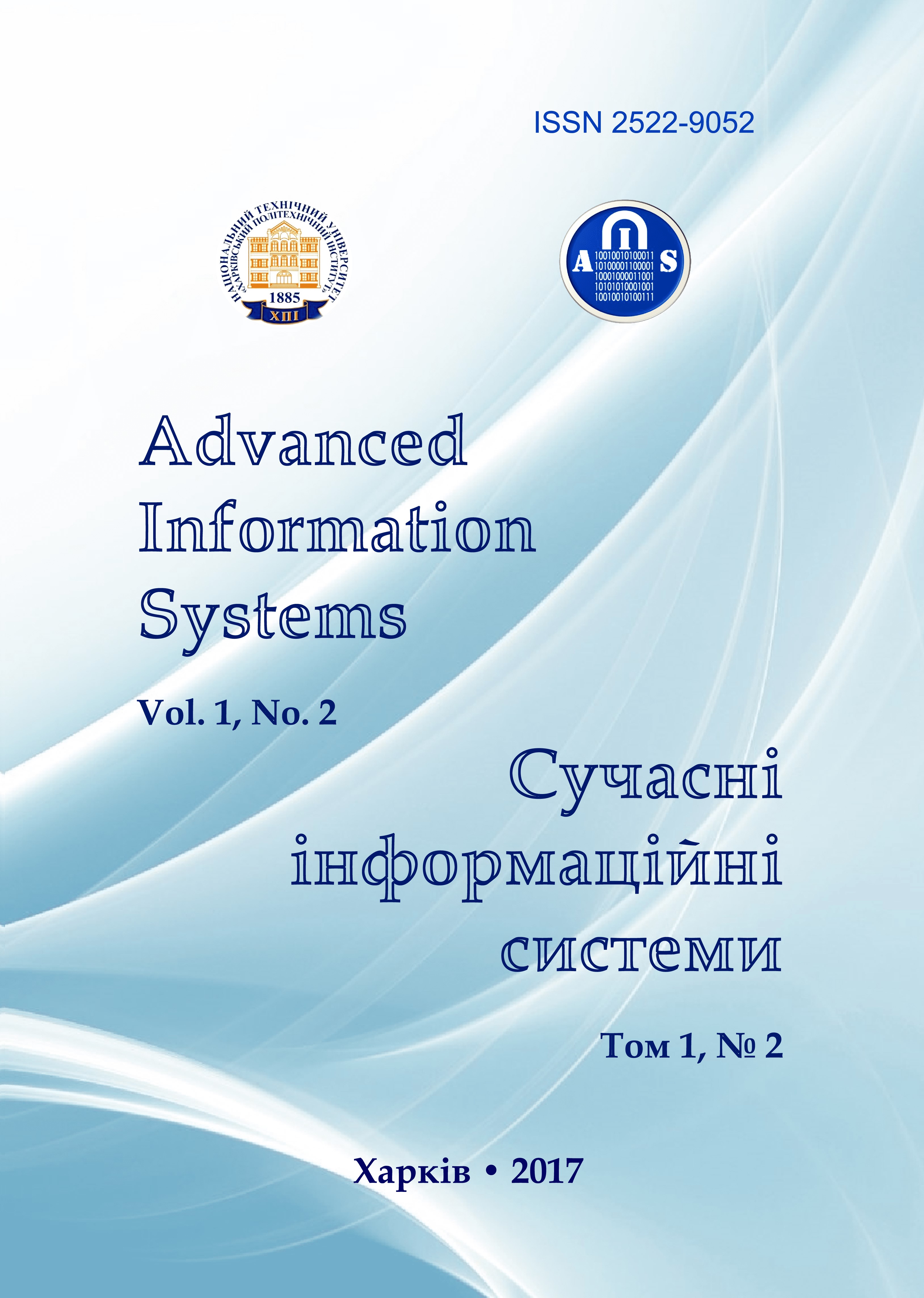Methods of estimation of the channel state of air defense systems
Main Article Content
Abstract
The subject of study in the article is the methods for assessing the state of channels of air-conditioning complexes operating in a complex electronic environment. The methods discussed in this article include the method of least squares, the method of mean square deviation, channels estimation methods for iterative methods of signal processing at reception, suboptimal algorithms for iterative channel estimation and information symbols based on the maximum likelihood method, linear unbiased estimation methods with minimal dispersion and methods of linear estimation with a minimum of mean square deviation. The purpose of the study is to conduct an analysis of existing methods for assessing the state of the air defense airway channels in the conditions of radio-electronic suppression and multi-beam propagation of radio waves. The tasks solved in the study: a mathematical description of known methods for assessing the state of the channels and the development of recommendations for the synthesis of optimal methods for assessing the state of the channels. The methods used in the study: theory of communication, theory of noise immunity and electronic warfare. In the course of the study, recommendations were obtained for the synthesis of optimal methods for assessing the status of channels under the conditions of intentional interference. Conclusions: in the presence of sufficient a priori information about the transmission of information symbols, the best results on the criterion of the ratio of accuracy of estimation and complexity of implementation is demonstrated by the algorithm of linear estimation at the minimum of the mean-square deviation. In the absence of sufficient a priori information about the transmission of symbols, the best option is an unmatched estimate for the minimum of the smallest squares. In order to increase the accuracy of the evaluation of the transmission characteristics of the air defense airway channels in the conditions of a complex electronic environment it is advisable to use iterative principles.
Article Details
References
Semenov, A.D., Artamonov, D.V. and Bruhachev, A.V. (2003), Identification of objects of management, Textbook, Publishing House Penz. state University, Penz, 211 p.
Zipkin, Y.Z. (1995), Information theory of identification, Science MathLit, Moscow, 336 p.
Grop, D. (1979), Methods of identification systems, Publishing house World, Moscow, 301 p.
Rao, S.R. (1968), Linear statistical methods and their application, Science, Moscow, 548 p.
Nechaev, U.B. and Malutin, A.A. (2009), “Estimation of parameters .multipath communication channel with iterative reception algorithms”, Theory and technique of radiocommunication, Release 2, pp. 35-43.
Uotkins, D. (2006), Fundamentals of matrix computations, Binom, Moscow, 664 p.
Gutkin, L.S. (1986), Optimization of electronic devices on the basis of indicators of quality, Radio, Moscow, 368 p.
Andersen, T. (1976), Statistical analysis of time series, World, Moscow, 756 p.
Brilindger, D. (1980), Time series, Мir, Moscow, 536 p.
Savaragi, E., Soeda, T. and Nakimozo, T. (1983), “Classical” methods and the estimation of the time series, World, Moscow.
Burg, J.P. (1975), Maximum Entropy Spectral Analysis, Ph.D. Dissertation, Department of Geophysics, Stanford University, Stanford.
Savchenko, V.V. (1996), “Detection and prediction of change of a random process based on spectral estimation”, Avtometria, No. 2, pp. 77-84.
